Written by Diana Shay Milazzo, Assistant Vice President
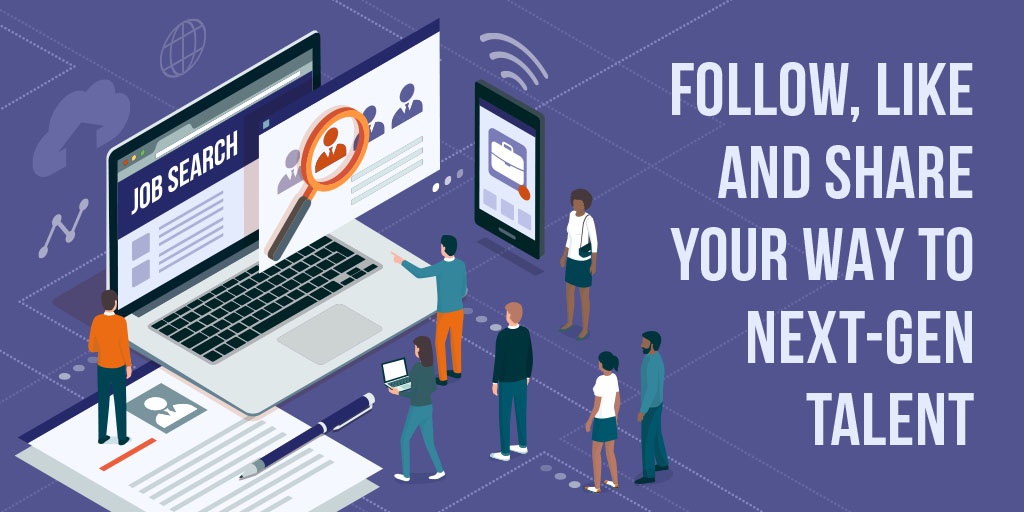
Picture this: young job seekers spent their mornings flipping through local newspapers, combing its pages for new listings and eagerly scanning the copy for responsibilities and requirements to which they were a match. When intrigued, they would package their resumes neatly with a cover letter and drop it in the mail and then patiently wait to be called for an interview. Furthermore, it was not uncommon to be in the dark about an employer until the day of the interview. Employers, on the other hand, were limited to paying for help wanted ads to attract candidates; and until resumes started rolling in, they were limited to internal candidates and referral lists.
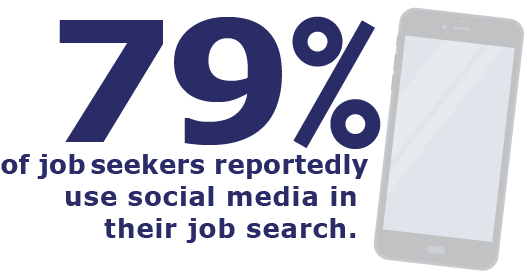 Fast forward thirty years and now employers are advertising their open positions through various online platforms, AI is notifying candidates of open positions and candidates are submitting job applications through their smart phones. The internet opened up channels, like job sites and forums, social media networks and alumni associations, through which to find work. Among them, social media is arguably the most reliable tool for attracting candidates, as 79 percent of job seekers reportedly use social media in their job search. Platforms, such as Twitter, LinkedIn and Facebook, have expanded from beyond personal status updates to encompass an agora of personal interactions between businesses and the public. Social media is no longer “nice to have.” Rather, social recruiting is now a key component of any employer’s talent strategy.
Fast forward thirty years and now employers are advertising their open positions through various online platforms, AI is notifying candidates of open positions and candidates are submitting job applications through their smart phones. The internet opened up channels, like job sites and forums, social media networks and alumni associations, through which to find work. Among them, social media is arguably the most reliable tool for attracting candidates, as 79 percent of job seekers reportedly use social media in their job search. Platforms, such as Twitter, LinkedIn and Facebook, have expanded from beyond personal status updates to encompass an agora of personal interactions between businesses and the public. Social media is no longer “nice to have.” Rather, social recruiting is now a key component of any employer’s talent strategy.

It is important that organizations harness the full potential of social media to attract Millennials and Generation Z – the protagonists of the future workforce. According to the Pew Research Center, Millennials already occupy 35 percent of all employees today and Generation Z is two-thirds the size of the Baby Boomer generation. However, their lack of interest in insurance careers is a challenge that insurers have to solve to ensure future success. Virtually nonexistent unemployment and looming mass retirements are complicating the industry’s talent crisis; and engaging emerging professionals is essential for forward-looking insurers.
Social recruiting provides an opportunity for organizations to promote the industry and its promising opportunities to emerging talent. The lack of interest in insurance careers is not because the industry doesn’t offer opportunities that align with what young professionals seek. It is because the industry does not tell its story in a way that resonates with them. Social recruiting is a means for organizations to stay connected to the younger generations. What must insurers do to leverage social media to attract top talent? How can organizations effectively appeal to the newest generations entering the workforce?
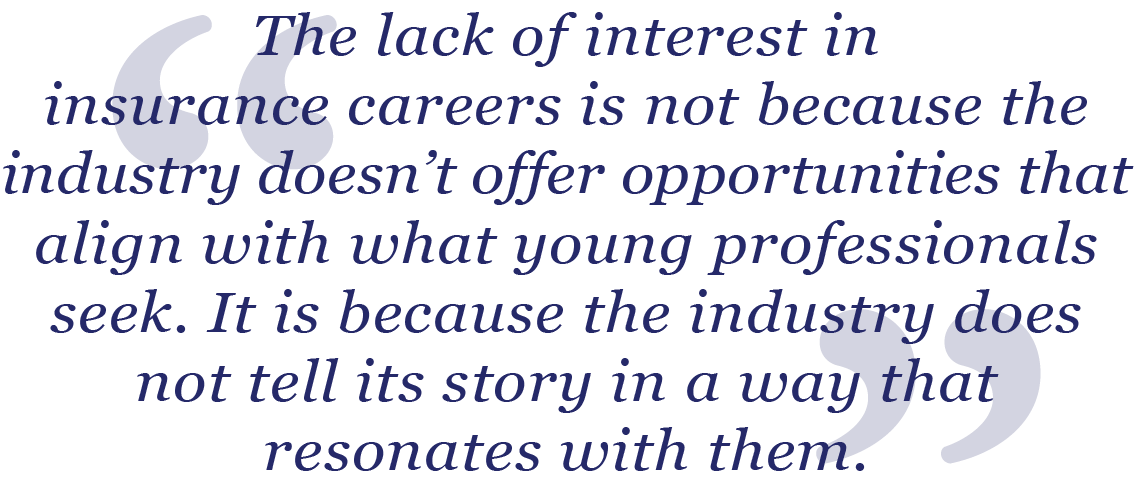
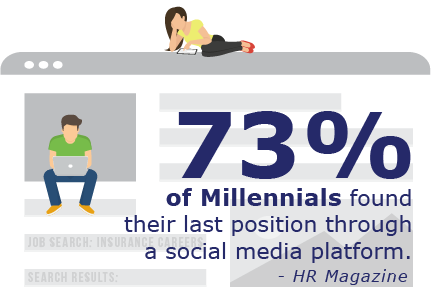
Provide Relevant Content
Social media is a powerful way to illustrate an organization’s missions and values, and this starts by sharing relevant branded content with potential candidates. It is crucial that insurers post not only internal updates and jobs, but also curate inspiring and relevant external content to improve its employer brand and reach. Insurers need to start by considering who their audience is. Published content should align with both the viewers’ interests and organizational talent initiatives. Emerging professionals who have had positive interactions with a company, including through social media, are more likely to apply for open positions. Posts also provide a simple channel for professionals to recommend their employers to their friends, increasing chances for referrals. Referred employees tend to have longer company tenures than non-referred ones.
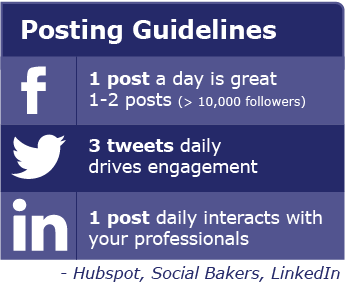 Share Content Often
Share Content Often
Just like any relationship, a firm connection with a social media audience is an adequate balance of sharing and listening. Although there are many research studies on best practices for corporate social media, it is important that employers experiment with posting frequencies to cultivate the best results and determine their own best practices. Too many posts or too little may drive followers away. Social media strategy must be unique to each organization’s audience. Analyzing engagement rates, such as number of likes or shares, and reviewing comments for each post can give an organization insight into what and how often to promote to different audiences.
Raise Brand Ambassadors
Social media usage should not be limited to corporate pages maintained by marketing or even recruiters, hiring managers and human resources specialists. Employers already believe social media marketing will be the most in-demand HR skill by 2020, but much more could be accomplished through active participation from employees in all areas. As a matter of fact, every employee must be trained to leverage social media as a means to authentically amplify their employers’ content and job postings. Traditional marketing strategies have proven less effective for Millennials and Gen Zers, who demand authenticity from potential employers. Personal, honest stories from individuals have proven to be more compelling, as 92 percent of people trust recommendations from friends and family over promotional campaigns.

Leaders should encourage employees to tell their own stories using their own uncensored voices. All team members must be full-time brand ambassadors who promote the organization’s content and open positions to their networks. They should be encouraged to share their employers’ modernization projects to illustrate their companies’ visions for the future of work and appeal to innovative talent.
Evaluate Candidates’ Online Activity
As much as candidates can evaluate their potential employers through their social media activities, the platform also serves as a tool for organizations to evaluate potential hires. Scrolling through candidates’ public profiles instantly saves hiring managers’ time and resources. Although they may not be professionally branded, the profiles convey the behavioral and cultural preferences of individual candidates. By evaluating a candidate’s social media presence, organizations can effectively gauge if a potential employee is the right fit for the position in question.
In the process, employers should ask themselves the following: Are the candidates retweeting the company’s thought leadership pieces? Did their professional contacts endorse specific skillsets the organization needs for the position? What type of content are they sharing or publishing? How positive/negative are their social media posts?

Monitor the Employer Brand
In addition to maintaining a social media presence, organizations should consistently monitor their employer brands on all relevant platforms and diligently engage with candidates. Candidates should be able to easily research a company’s career opportunities, leaders, employee benefits and company culture. At the same time, company information needs to be regularly updated in recruiting websites, such as Glassdoor and Indeed. Negative reviews on such platforms tend to heavily influence a job seeker’s decision to apply for a position or accept an offer. In fact, more than half of job seekers decide against applying for a position after reading a negative review about the employer. Employers should treat every review as a personalized email and provide consistent and fair feedback.
 Make Careers Page Mobile-Friendly
Make Careers Page Mobile-Friendly
However engaging and inspiring a company’s social media posts are, social recruiting cannot live up to its true value when the company’s careers page is not mobile-friendly. In today’s age of technology, people use their smart phones not only to access social media and browse information, but also to actively search and apply for jobs. In fact, 45 percent of job seekers use a mobile device to search for jobs at least once per day. As a result, most smart phone users who access social media on their mobile devices expect the same accessibility for other parts of the job search. With just a few clicks on an organization’s website, candidates already start forming personal opinions in regards to the company and its application process. Candidates are less likely to stay on a website where they cannot find relevant information quickly. Some of them may never revisit in the future.
Employers must create and maintain a responsive, mobile-friendly website for candidates to learn more about the company and its positions. Attention spans for Millennials and Gen Zers are becoming increasingly shorter. An engaging mobile-friendly webpage filled with relevant content allows applicants to quickly find relevant jobs that fit their requirements and submit resumes and cover letters within minutes.